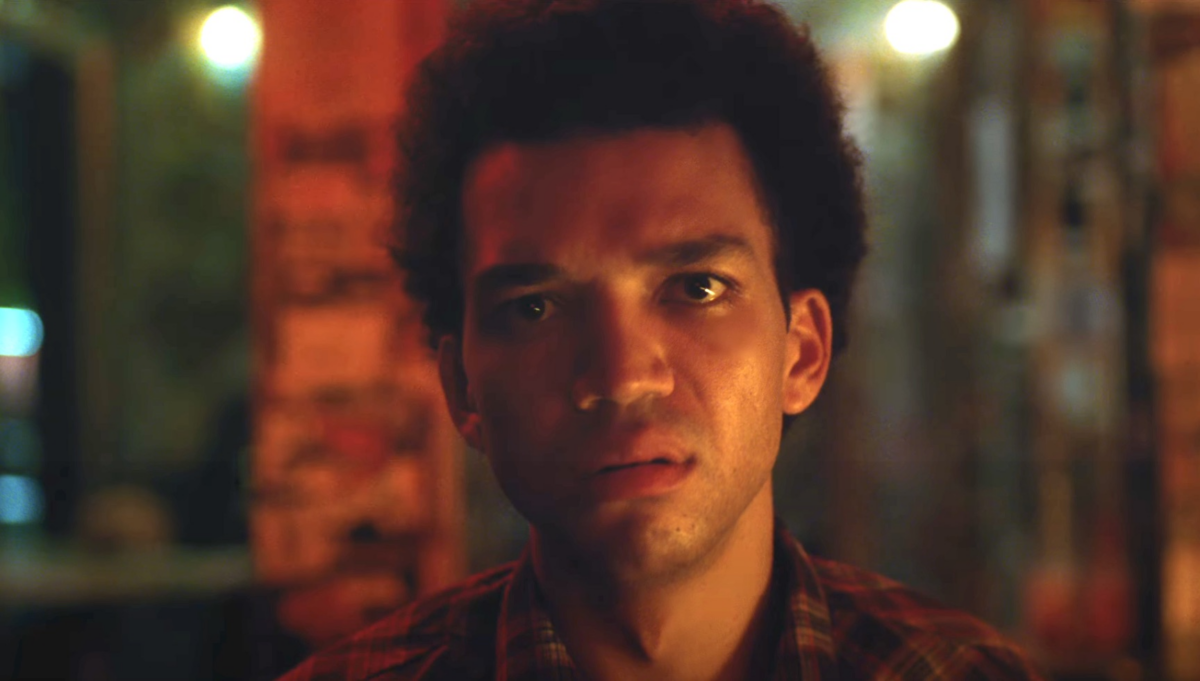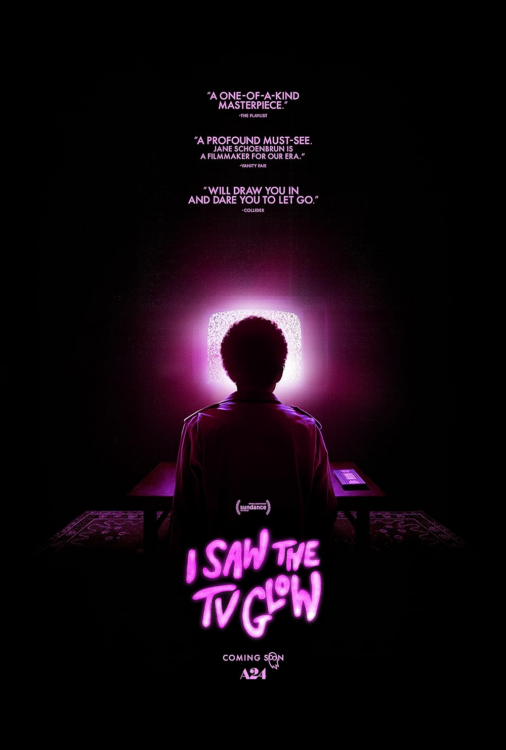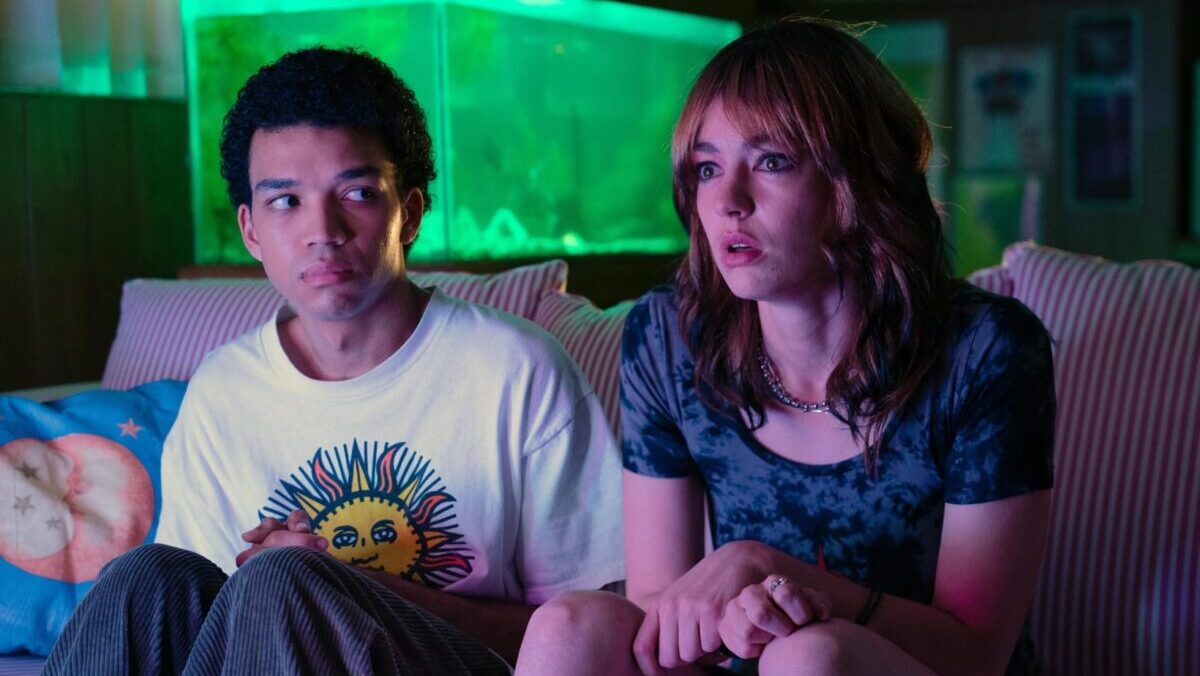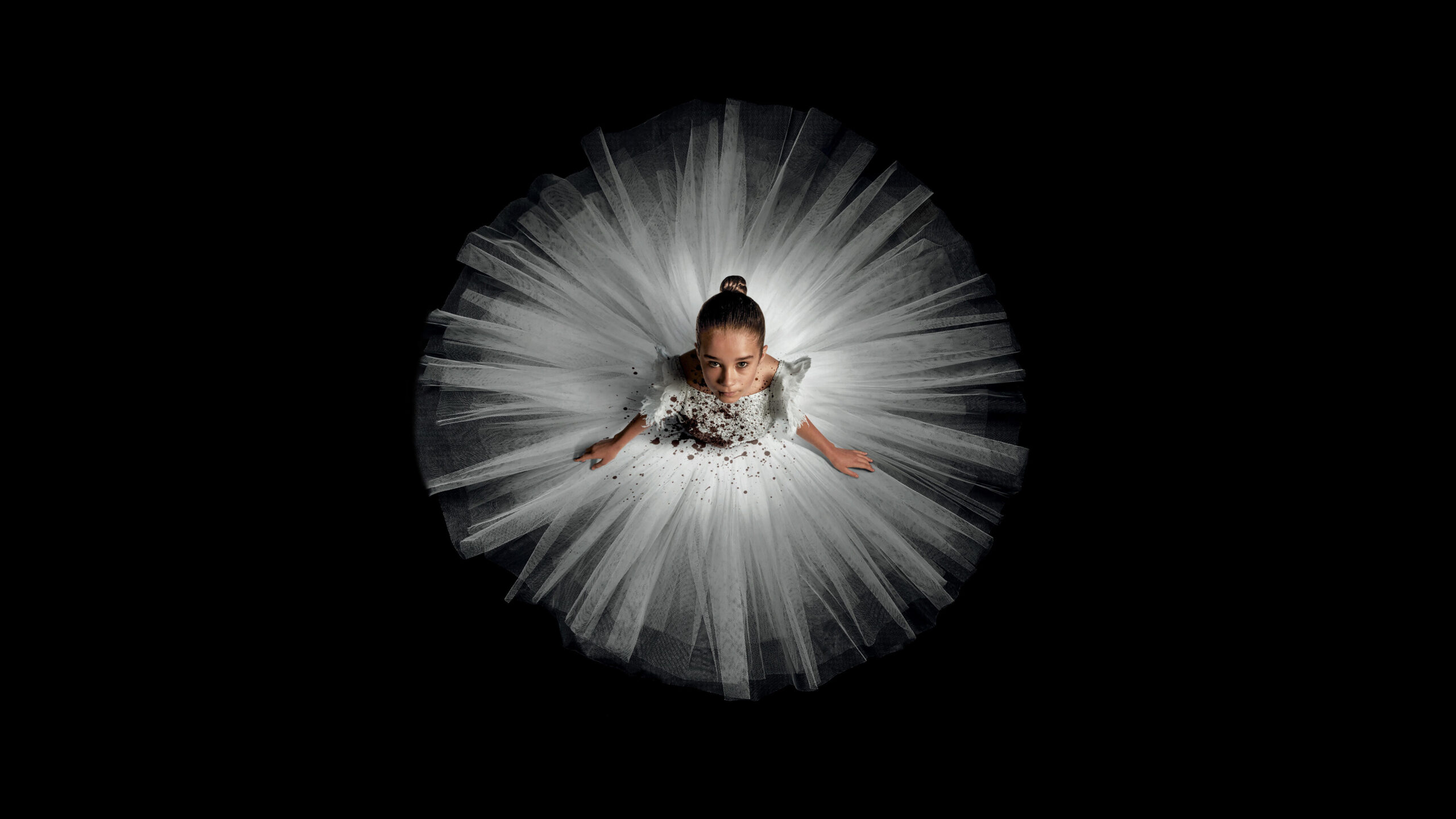No film will ever capture the off-kilter vibes of 1990s pieces of media destined for children quite like Jane Schoenbrun’s I Saw the TV Glow. If anything, Schoenbrun perfectly understands the unsettling shows and movies that were burned upon children’s retinas as they were subjected to some of the most terrifying, traumatic, and often violent images showrunners and filmmakers would craft, while a Milan Kymlicka-esque score hammered home their sinister presentation.
That’s what first struck me as I was watching Owen (Ian Foreman) laying his eyes on The Pink Opaque for the first time, a show that he will eventually be obsessed with, regardless of how purely terrifying the whole affair is (Ice Cream Man jumpscares, and a Georges Méliès-inspired moon antagonist that grows far more evil as the film progresses and Owen watches more episodes).
RELATED: I SAW THE TV GLOW: First Look at A24’s New Horror Film
There’s an innate fascination he has with the images he observes that most children probably can’t stomach, as brilliantly explained by his new friend, Maddy (Brigette Lundy-Paine). For her, The Pink Opaque is the perfect television series, but “it’s way too scary for most kids.”
We quickly discover that it is – and yet the show is predominantly destined for them. Of course, there’s a deeper metaphor behind Owen’s fascination with the show, which ultimately gets revealed with aplomb, but I’ll try to avoid revealing that here.
I Saw the TV Glow Is a Metaphor-Heavy Story
Why create something so distressing if younger audience members will ultimately develop PTSD as a result? That would be the apt way to describe most films and television shows that were made at the time of The Pink Opaque’s release. The show does not exist for real, and the main characters are played by Helena Howard and Lindsey Jordan, but the aesthetic on which Schoenburn plucks out and riffs are very much alive in shows like Goosebumps or films like Gabriel Pelletier’s Karmina.

However, Owen does not react in a state of shock and terror, which “most kids” likely did when they laid eyes on their perception of the Ice Cream Man for the first time. Instead, he starts to develop intense feelings over the show, especially in how it depicts Isabel (Howard) and Tara’s (Jordan) relationship, feelings that were never there until the television began to show him things he never thought existed.
From there, it’s easy to figure out what the film is ultimately about, although some may not immediately grasp its visual and textual metaphors. Schoenbrun eventually lays it out near its end, though the thematic underpinning felt increasingly repetitive.
Perhaps the message wasn’t as obvious for audience members who aren’t accustomed to a cinema that never holds their hand and understands how mature they are in figuring out the overall message on their own, and it’s why Schoenbrun continuously repeats it until its abrupt final shot. However, this ultimately weakens the movie, which is far stronger when the audience faces images they must reckon with and are forced to look at to understand the change Owen experiences within his body.

When you don’t handhold the audience for most of the runtime, I don’t expect to be told what it’s about within its final moments. I’d like to fully figure it out on my own, making for a far more complete experience, as we will all bring our subjectivity to what’s on-screen.
Of course, we will all have our viewpoints on the movie, especially in its presentation of The Pink Opaque’s images, since we were all touched – one way or another – by television. For many queer kids who grew up in the early 2000s, watching Batman Forever as it aired on mPIX (RIP, you were one of the most real classic movie channels in Canada) for the first time was a revelatory experience. And being deeply traumatized by The Peanut Butter Solution in second grade was another that I still have massive sleepless nights over. Think about it. I was eight when I saw the movie, and only partially.
I am now 25 and still remember the horrifying stuff I saw in that movie as if it were yesterday – yet it’s one of the most acclaimed family productions in Québec. I’m sure by now the film is not at all what I remember, and I would be perfectly fine with watching it, just like Owen does when he revisits The Pink Opaque and realizes that, hey, this thing isn’t the revelatory show I remember. But since my firsthand experience with the film was so strong and traumatic, I doubt I’ll ever revisit it or have the energy to stomach it.
I Saw the TV Glow Has Several Distressing Images
This feeling is intensely depicted in I Saw the TV Glow’s best sequence, where Owen narrates the series finale of The Pink Opaque before it got canceled. What follows is the most harrowing depiction of 1990s kids’ media I’ve ever seen, one that was never afraid of being disturbingly violent and scarring all of us permanently.

You may think it’s an exaggeration, but what ultimately happens to the protagonists in the finale of I Saw The TV Glow probably would’ve been shown on television and given everyone watching trauma that’ll follow them for the rest of their lives. That’s how agonizing it is, and the fact that I Saw the TV Glow maintains a PG-13 rating for release is even more impressive. It’s not about jump scares. When the atmosphere is at such a level of complete disturbance, everything begins to creep up on you.
As Owen, Smith gives the best performance of his career, one that he never had the opportunity to showcase in the titles he was cast in. He not only deftly shows how The Pink Opaque has drastically changed his life, but he begins questioning his sense of self as he always reckons with his experiences within the show through his nights with Maddy.
Lundy-Paine is equally as magnifying, particularly in two key monologue sequences, but Smith is the one who shows everyone who cast (and pitifully wasted) him in previous projects what they’ve been missing. This transformation is deeply felt not only in its evocative visuals from cinematographer Eric K. Yue, who constantly flips the vibrant purple colors on screen with digitally-rendered VHS shots of The Pink Opaque that, on its surface, look normal but hide something much darker than it’s initially presented in.
RELATED: HAZBIN HOTEL: A24 Music and Prime Video Share the Showstopping Single ‘Poison’ From the Soundtrack
All of this is elevated with I Saw the TV Glow’s impeccably crafted sound design, possibly the best aural presentation of the year. Like the images on-screen, the sounds slowly creep up on you. Notice how the atmosphere of Maddy’s basement is far louder in its floor cracks and ambient noises after Owen watches The Pink Opaque – the show is changing his physiology, but he doesn’t want to face that reality he continuously tries to drown out. It’s not until the sounds become so overwhelming your only choice is to confront them directly.
This visual and aural experimentation is at the core of Schoenbrun’s message, which wouldn’t have been as effective had they not taken that leap in crafting unsettling images married with an ever-changing (or, in this case, ever-distorting) soundscape.
It’s just a shame that the movie seems to insist on handholding the audience in its final moments, which puts the story inside a circle that never seems to know when to go beyond the point it keeps repeating when it really shouldn’t. As a result, I Saw the TV Glow begins to fizzle out as it reaches its climax, never knowing if it should fully commit to its metaphorical premise or tell the audience what it’s ultimately about.
I Saw the TV Glow unfortunately chooses the latter, but what comes before cannot be overstated. If anything, it shows how much Schoenbrun understands that the horror genre is a great vehicle to discuss themes of gender identity, friendship, and loneliness while reminding us how deeply twisted the 1990s were regarding children’s entertainment. I’m honestly surprised no filmmaker got sued for traumatizing millions of kids who tuned in to their apparent “children’s” movies or shows at that time. Honestly, what were they thinking?
Rating: 4/5
About I Saw the TV Glow

Release Date: May 3, 2024 (Limited)/May 17, 2024 (Wide)
Director: Jane Schoenbrun
Screenplay: Jane Schoenbrun
Music: Alex G
Producers: Emma Stone, Dave McCary, Ali Herting, Sam Intili & Sarah Winshall
Production: Fruit Tree, Smudge Films, Hypnic Jerk, Access Entertainment
Distribution: A24
Cast: Justice Smith, Brigette Lundy-Paine, Ian Foreman, Helena Howard, Lindsey Jordan, Fred Durst, and Danielle Deadwyler
Synopsis: Teenager Owen is just trying to make it through life in the suburbs when his classmate introduces him to a mysterious late-night TV show — a vision of a supernatural world beneath their own. In the pale glow of the television, Owen’s view of reality begins to crack.
I Saw the TV Glow is now playing in select theaters. What did you think of the movie? Is there a piece of children’s entertainment that traumatized you? Let us know in the comments below, and be sure to follow us on social media!
KEEP READING: A24: Surging Studio Bringing Its A-Game to SXSW 2024




